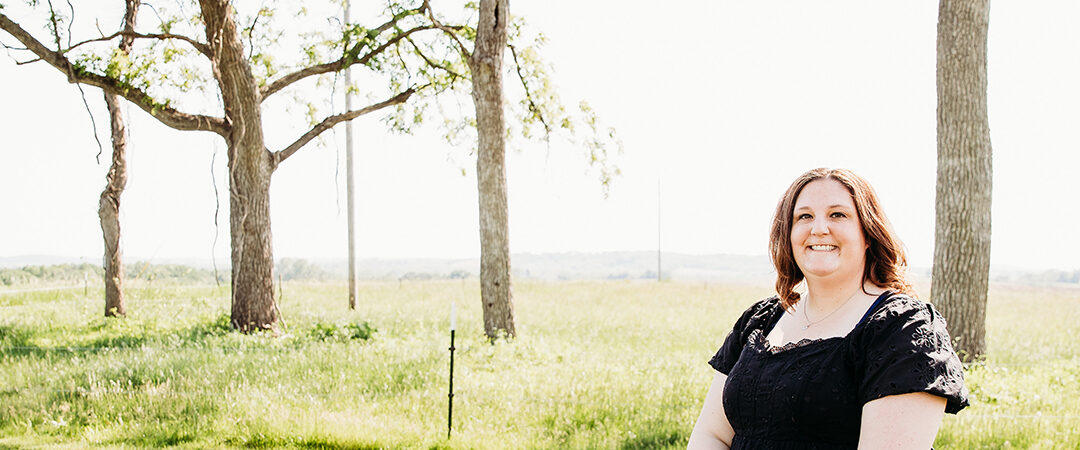Last night, I had the opportunity to co-present a presentation titled “Developing your Personal Learning Network” with Dr. Ana-Paula Correia of Iowa State University. We were invited to present virtually by Dr. Curt Bonk to the “Emerging Learning Technologies” graduate seminar at Indiana University. This was an amazing opportunity, as I was able to connect a project I have been working on for several semesters with real-life application in graduate school.
 |
| Screenshot from the virtual presentation titled “Developing your Personal Learning Network.” |
During our presentation, we covered the emerging practice of developing a personal learning network for both academic and professional purposes. Dr. Correia began the presentation with an overview of the concept itself, grounding this style of learning in the theory of Connectivism. Connectivism asserts that knowledge consists of the network of connections formed from experience and interactions with a knowing community” (Downes, 2006). Furthermore, a personal learning network is “a group of people who can guide your learning, point you to learning opportunities, answer your questions, and give you the benefit of their own knowledge and experience” (Tobin, 1998). Dr. Correia covered the “what” and “why” of developing a personal learning network, focusing on the following reasons:
- to find information
- to find training opportunities
- to find methodology-related materials
- to locate resources for your classroom
- to reach “the best of the best” regardless of geographical and time restraints
- to reach like-minded and not-so-like-minded that support and challenge thinking
- to share and disseminate information
- to get lesson plan ideas from professionals
- to network with colleagues
- to collaborate on projects and find collaborative solutions
My contribution to the presentation was discussing the evolution of one’s personal learning network into an online medium. By utilizing online tools, one facilitates the development and growth of their network. In fact, “learning is built around learning communities and interaction, extending access beyond the bounds of time and space, but offering the promise of efficiency and widening access” (Salmon, 2001). The benefits to utilizing online tools are countless, but include availability, affordability, access to knowledge, and developing one’s reputation.
I focused my portion of the presentation on work that I’ve done at Engineering-LAS Online Learning (ELO). ELO has developed an Orientation to Online Learning, with a module designed to inform the online learner of the importance of developing a personal learning network. More importantly, I focused on the “how” of the concept—How do I develop my network? And what techniques and tools are used to develop my network?
ELO has developed a tool called the PLN Tool Browser in which students can “shop” for tools to utilize in their network. I identified four functions of tools, including collaboration (which allow you to share work with others), syndication (which allow you to broadcast and collect information from multiple sources), aggregation (which allow you to collect or compile information from multiple sources, for your own personal collection or to share with others), and production (which enable the user to produce content). The PLN Tool Browser provides additional information about each of these tools, including a description, the download website, the type of format, pricing and licensing information, and testimonials from students that have used this tool.
Finally, I discussed several challenges that I’ve personally experienced as I’ve developed my own personal learning network. I left these challenges open for discussion, as I am currently exploring these issues. These challenges include the following:
- How do I know if I have a high quality PLN?
- How much time should I devote to the creation and maintenance of my PLN?
- How can I identify an expert to follow, or just a “loudmouth?”
- With the massive amounts of information I’m gathering, how do I know what’s credible and who’s credible?
- What’s the appropriate way to interact with others in my online personal learning network?
Developing this presentation was an exciting learning experience, as I was able to revisit my own personal learning network and analyze its usefulness and areas in which it can improve. One technique that I emphasized to the students in the seminar is to always consider what your goals are for your personal learning network before incorporating various online tools. As I transition from graduate school to a full-time position, these goals are going to change tremendously, so I took this opportunity to examine how my network will change in the future.
I would like to thank Dr. Ana-Paula Correia for including me in this project. It was an all-around wonderful experience, from meeting Dr. Curt Bonk to experiencing virtual presentation software (Adobe Connect) in action.
Click here to access an archived recording of the seminar.
References
Downes, S. (2006). Learning networks and connective knowledge. Retrieved Nov 28, 2012 from http://itforum.coe.uga.edu/paper92/paper92.html.
Salmon, G. (2001). Changing Learning Environments, Association of Learning Technology (ALT) Conference, 2001. Retrieved Dec 2, 2012 from http://www.atimod.com/research/presentations/Its%20teaching.htm.
Tobin, D. (1998). Building your personal learning network. Corporate Learning Strategies. Retrieved Dec 2, 2012 from www.tobincls.com/learningnetwork.htm.

